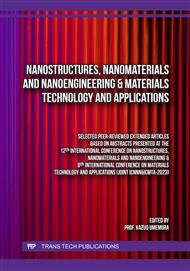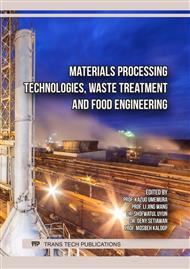p.41
p.47
p.55
p.61
p.67
p.73
p.81
p.87
p.97
Experiments of Failure and Damage in ITO-Coated PC/FPC with ACF Bonding due to Bending Fatigue
Abstract:
Anisotropic conductive film (ACF) is frequently used in the packaging manufacture for fine-pitch conductivity and interconnection, maintaining the electrical and mechanical connections between micro-electrodes. A key determinant of good conductivity is the deformation, fatigue, and breakage of conductive particles within the ACF packaging. This study aims to measure the resistance changes of specific conductive channels and observe the microscopic fatigue damage of compressed ACF conductive particles through the fabrication of Flex Printed Circuits (FPC) / Indium Tin Oxide-coated Polycarbonate (ITO-coated PC) specimens and the setup of bending experiments. The results show that the deformation, fatigue, and breakage of conductive particles will quantitatively affect electrical conductivity performance. By microscopically observing the breakage morphology of conductive particles before and after bending, it can be found that bending in the ACF packaging area further exacerbates the previously compressed and broken conductive particles, with cracks continuing to grow and shatter.
Info:
Periodical:
Pages:
67-71
Citation:
Online since:
March 2024
Authors:
Keywords:
Price:
Сopyright:
© 2024 Trans Tech Publications Ltd. All Rights Reserved
Share:
Citation:



